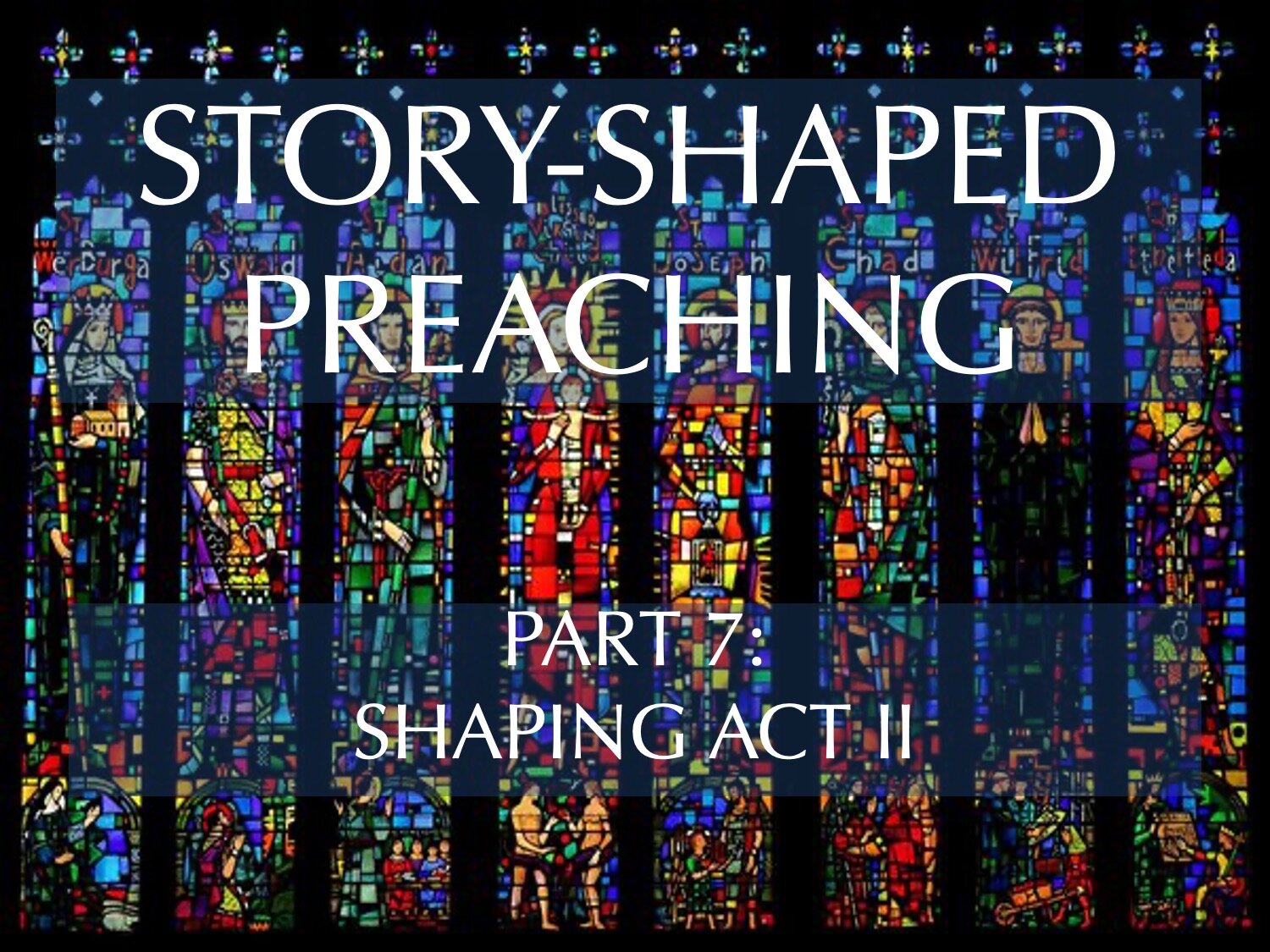
Preaching Teams: Multiplication vs. Addition
If you are a preacher who wants to pursue kingdom multiplication in your ministry, the thing you most need to reproduce is other preachers. A preaching team provides a great way to do this.

Preaching Exalts God
To proclaim God’s word is to call God’s people to worship. This doesn’t mean simply that worship is the most important application point in the sermon. It means that worship fuels every application point in the sermon. The ultimate and highest goal of preaching is that hearers walk away from the sermon filled with wonder, awe, and joyful delight in God. When this happens, all application becomes spontaneous response rather than dutiful obedience or moralistic burden.

Preaching Teams Free Up Time
A preaching team frees the preacher to take the time necessary to deliver not just a good talk, but a message from God’s heart.

Preaching Names Our Brokenness
This is the prophetic function of preaching: naming our brokenness. Peeling back the layers of our denial, our deflection, and our self-deception to give a name to the self-destructive inclination of our hands, our heads, and our hearts. Why does this matter? Because only when our rebellion is named can we repent of it. And only when we repent can we experience redemption. And only through redemption can we enjoy restoration. Naming our brokenness is the at the trailhead to the only possible path to wholeness, healing, and grace.

Preaching Teams Share the Load
The most obvious benefit for a preaching team is that it relieives the pressure on the senior pastor to carry the entire load of a church’s ministry of proclamation.

Preaching Makes Disciples
In the end, discipleship is more caught than taught. So, the important question for a disciple-making preacher is not just “what are my hearers learning from the content of my preaching?” but, “what are they learning from the example of my preaching?” How we preach is as important as what we preach. Here are three important ways our practice of preaching will shape the discipleship of our church.

A Biblical Rationale for Preaching Teams
Although the New Testament never says, “Thou shalt preach in teams,” life in the early church certainly seems to have included multiple preachers in a congregation. Preaching teams may not be prescribed as a norm, but I believe they are at least described as a possibility – and a good one!

Preaching Creates Culture
Preaching matters because preaching creates culture. Just being aware of this fact should move us towards meaningful and regular reflection on the question, “what kind of culture is my preaching creating?”

Definitions of Preaching
Through the years, one of the first assignments I’ve often given new preaching students has been to write their own definition of preaching. Before we get into the nuts and bolts of the task, it’s important to reflect theologically and philosophically on just what it is that we are doing.

Review: Practicing The Preaching Life
Who among us has not heard (or preached!) sermons that were exegetically accurate, homiletically correct, thoughtfully applied and adequately delivered, yet which still seemed to fall flat? All the essential pieces are in place, yet there is a sense that some intangible quality (Authenticity? Credibility? Wisdom?) is missing. David Ward, Professor of Homiletics and Practical Theology at Indiana Wesleyan University, addresses this problem with the principled assertion that “preaching is more about life than it is about skills.”

ACT III: Redemption
Regardless of the sermon form you are using, the part of the sermon you need to plan most carefully is the end. This is the moment of highest intensity, the time for decision, the point at which the truth of the sermon comes either to a triumphant climax or a tired fizzle. It is time to “land the plane” and if you do not have a checklist to follow, you may well find yourself circling the runway (or just flying out to sea) until you run out of gas and sputter to a crash landing.
I find it best to have a clear sequence to follow when planning the end of the sermon. This is as true for a story-shaped sermon as it is for a deductive one. Here is the sequence I recommend for Act III:

Homiletical Conclusions
Homiletical Conclusions are the last stop before we begin the actual work of shaping the sermon. As a matter of fact, we could say that the Homiletical Conclusions mark the starting point for building the sermon.

Act II: Quest
Act II is the quiet, persistent workhorse of the three-act plot. Act I grabs attention, introduces conflict and makes promises about where the sermon will lead. Act III gets the thrill of a climactic gospel turn and resolution. Act II inherits the expectations of Act I and carries the longest stretch of the narrative while laying the groundwork for the grand revelation of Act III. It is like a dutiful middle child, living in the shadow of the highly successful older brother while deferring attention and resources to the darling younger sister.
The work of Act II may not be as glamorous, but it is just as essential to the transformation we seek in the story-shaped sermon. It has several important jobs to do.

The Application Question
No sermon is complete that does not apply the truth of the biblical text to life. No gospel-driven theological reflection is complete that does not ask the Application Question.
As we seek the gospel-driven path from text to sermon, we have so far explored three questions. The fourth and final question provides a fitting culmination of all of these by applying the message in light of the gospel as well as the biblical metanarrative: How does this text invite us into God’s Story?

Act I: Fall
This is the job of Act I in a narrative sermon: to create interest through urgency by placing us in a story where the message really matters. How do you accomplish this? Here are four steps for stirring interest through urgency.

The Redemption Question
If we preach an entire sermon and never mention the Christ, can we claim that it is a Christian sermon? I have come to a firm conviction that our preaching should always, ultimately, be about Jesus. Surprisingly, this conviction is not necessarily shared by all Christian preachers.

Focus, Tension, Discovery
Before we begin to plot our story-shaped sermon, there are three preliminary items we need to define. Consider these to be narrative “add-on’s” to our Homiletical Conclusions. Taking aim in these areas before you begin will save time and establish clarity from the start.
These three components will help you establish the focus of the sermon, the tension of the sermon, and the moment of discovery that will help you get to the sermon climax in the end.

The Brokenness Question
As preachers, whether our objective is to evangelize the lost, to encourage the struggling, to comfort the suffering, or to disciple the growing, the path towards an experience of the gospel will always pass through an awareness of our own brokenness. Most often, this is where it will begin.

The Sermon in Three Acts
“Plot” is the sequence of events through which a story moves. Aristotle saw two fundamental movements common to all plots: the complication and the dénouement. (Poetics, XVIII) Contemporary fiction writers expand the list to five events. It is no coincidence that these correspond almost precisely to the five movements described by Lowry as the “homiletical plot.” (The Homiletical Plot: The Sermon as Narrative Art Form. Louisville: Westminster John Knox Press, 2001, 27-87) They are time-honored and universal—prominent in all narrative genres and media, from simple storytelling, to literature, to the silver screen. Film makers arrange these five movements into three acts.


